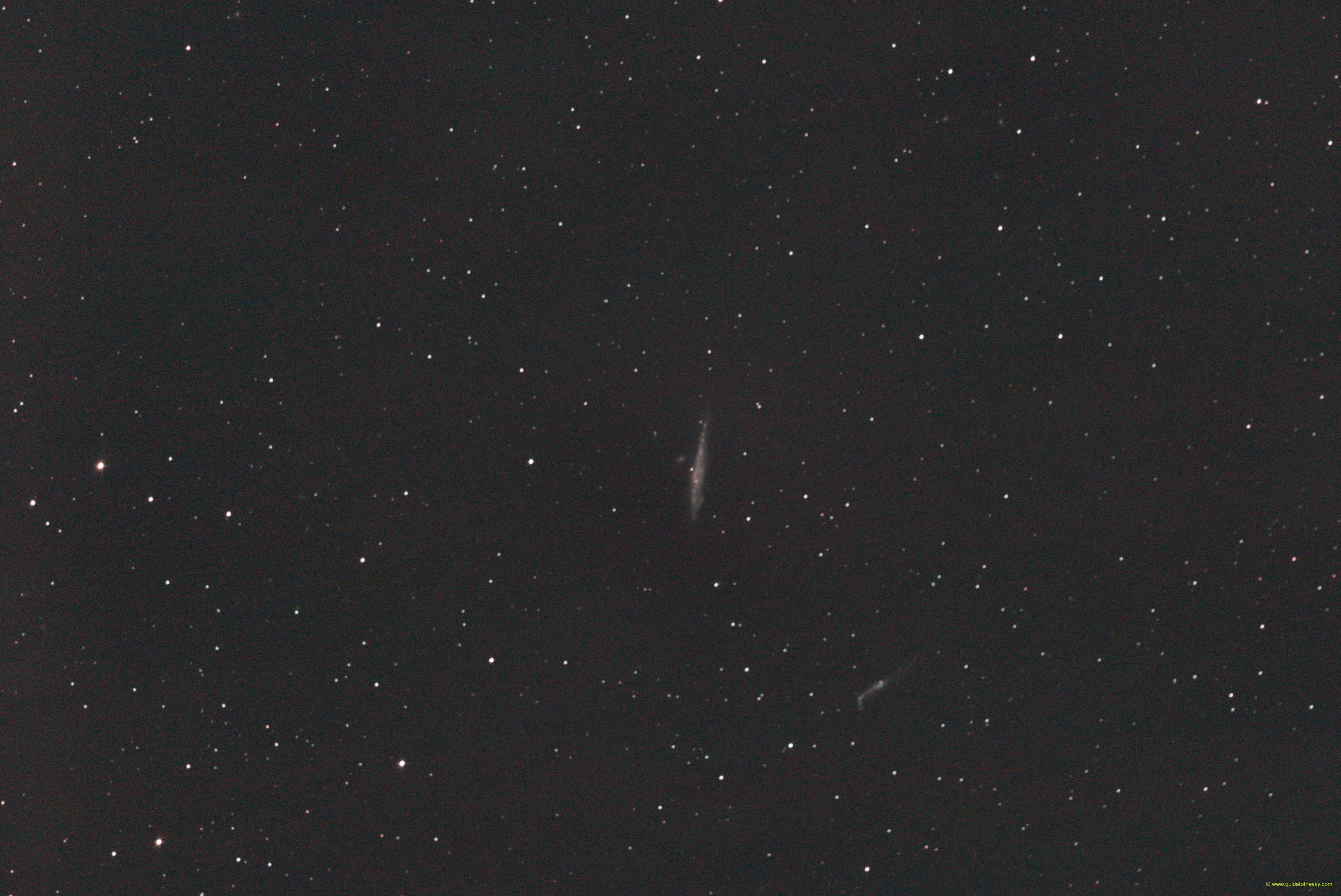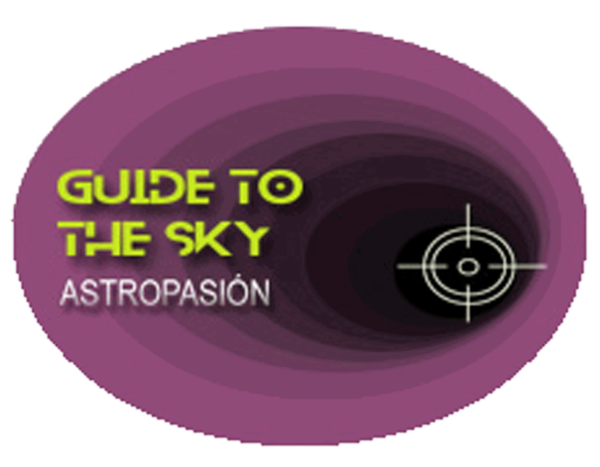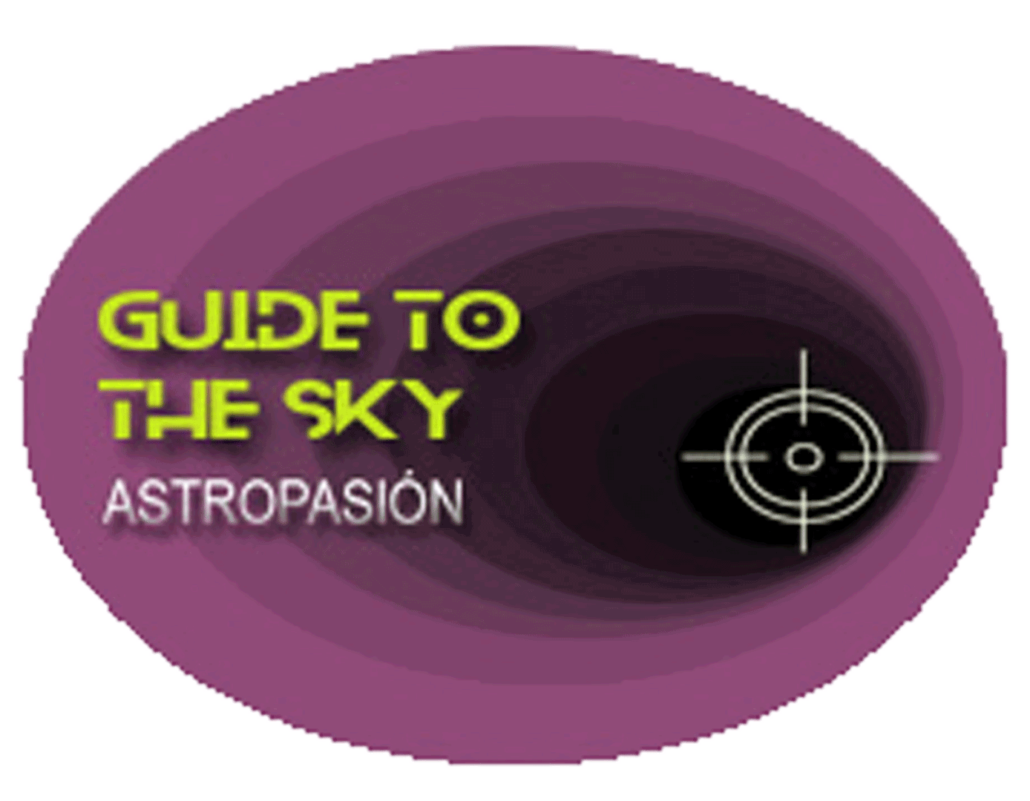NGC 4631 - Coma Berenices

NGC 4631 es de la de la {{ object[0].NGC4631.visualMagnitude }} magnitud, situada aproximadamente a {{ object[0].NGC4631.mesDistances[0].dist }} {{ object[0].NGC4631.mesDistances[0].unit }} de nosotros. Es muy probable que podamos ver una galaxia satélite a unos 5' de N, la NGC 4627. Ambas han sido incluídas por Halton Arp en el llamado Atlas de galaxias peculiares.
Muy cerca de NGC 4631, 30' al SW, podemos encontrar a NGC 4656, otra espiral barrada de la 10.5 magnitud también vista de perfil, que es llamada a veces la Galaxia del palo de Hockey pues tiene también un satélite: NGC 4657 en el extremo N que le da esta curiosa forma.
NGC4631 - Galaxia de la Ballena - en la IA
NGC 4631, often called the Whale Galaxy, is a beautiful and well-known spiral galaxy located about 25 million light-years away in the constellation Canes Venatici (the Hunting Dogs). Here's a summary of its key characteristics and interesting features:
Key Characteristics:
- Type: Sb (Spiral galaxy) - meaning it's a spiral galaxy with a prominent bulge and moderately wound arms.
- Distance: Approximately 25 million light-years.
- Size: Roughly 80% the size of our Milky Way.
- Mass: Estimated to be around 300 billion times the mass of the Sun.
- Apparent Magnitude: About 9.3 (relatively bright, but still requires a telescope to see well).
Interesting Features:
- The Whale Galaxy: Its elongated, distorted shape gives it the nickname "Whale Galaxy."
- Tidal Interactions: NGC 4631 is interacting gravitationally with several smaller galaxies, including NGC 4627 (a dwarf elliptical galaxy) and NGC 4656. These interactions are distorting its shape and triggering star formation.
- Starburst Activity: The tidal forces from these interactions are compressing gas within NGC 4631, leading to intense bursts of star formation, especially in the outer regions of the galaxy.
- Diffuse Halo: It has a prominent, diffuse halo of ionized gas (seen in X-rays and other wavelengths) extending far beyond the main disk. This halo is thought to be partly the result of outflowing gas heated by supernovae from the starburst activity.
- Companion Galaxies: As mentioned, it has several companion galaxies, which are part of its galactic group.
How to Observe It:
- Telescope: You'll need at least a moderate-sized telescope (6-inch aperture or larger) to see it well.
- Location: Find a dark sky site away from city lights.
- Constellation: Locate Canes Venatici, which is near Ursa Major (the Big Dipper).
- What to Expect: Through a telescope, you'll see a long, thin, elongated galaxy. Larger telescopes and longer exposures will reveal more detail, including the mottled appearance of star-forming regions and the distorted shape.
Scientific Significance:
NGC 4631 is an important object for astronomers studying:
- Galaxy Interactions: It provides a prime example of how galaxies evolve through gravitational interactions and mergers.
- Starbursts: The starburst activity helps scientists understand the processes that trigger and regulate star formation in galaxies.
- Galactic Halos: The diffuse halo offers insights into the transport of gas and energy between galaxies and their surroundings.
- Tidal Tails: The tidal interactions between NGC 4631 and its companion galaxies create tidal tails, which are streams of stars and gas extending far from the main galaxy. These tails provide information about the gravitational forces involved and the distribution of dark matter.
In summary, NGC 4631 (the Whale Galaxy) is a fascinating and well-studied spiral galaxy with a distinctive shape, ongoing star formation, and complex interactions with its neighbors. It's a rewarding object to observe for amateur astronomers and a valuable resource for professional researchers.
Más información sobre NGC 4631 en NASA/IPAC.
Mapa alrededor de NGC 4631
Otros identificadores de NGC4631:
"BWE 1239+3248" ,"MITG J124203+3232" ,"NVSS J124208+323231" ,"[CAB95] IRAS F12396+3249" ,"[NKB95] N4631" ,"GB6 B1239+3248" ,"87GB 123941.4+324853" ,"2E 2826" ,"7C 1239+3248" ,"APG 281" ,"B2 1239+32" ,"B2.1 1239+32" ,"GB2 1239+328" ,"IRAS 12396+3249" ,"IRAS F12396+3249" ,"ISOSS J12421+3232" ,"KPG 350a" ,"KPG 350" ,"KUG 1239+328B" ,"LEDA 42637" ,"LJHY 107" ,"MCG+06-28-020" ,"NGC 4631" ,"OHIO N 366" ,"TC E22" ,"UGC 7865" ,"UZC J124208.0+323226" ,"Z 188-16" ,"[DFO95] 35" ,"[KVB99] 31" ,"[SLK2004] 730" ,"[T76] 76B" ,"[VDD93] 169" ,"2MASX J12420800+3232294" ,"CAIRNS J124208.00+323226.0" ,"[CHM2007] LDC 867 J124208.00+3232294","[CHM2007] HDC 706 J124208.00+3232294","2E 1239.5+3248" ,"EXSS 1239.6+3248" ,"Z 1239.7+3249" ,"[M98c] 123945.3+324905" ,"PSCz Q12396+3249" ,"[KOV2009] 64" ,"NAME Whale Galaxy" ,"SDSS J124207.23+323235.0" ,

